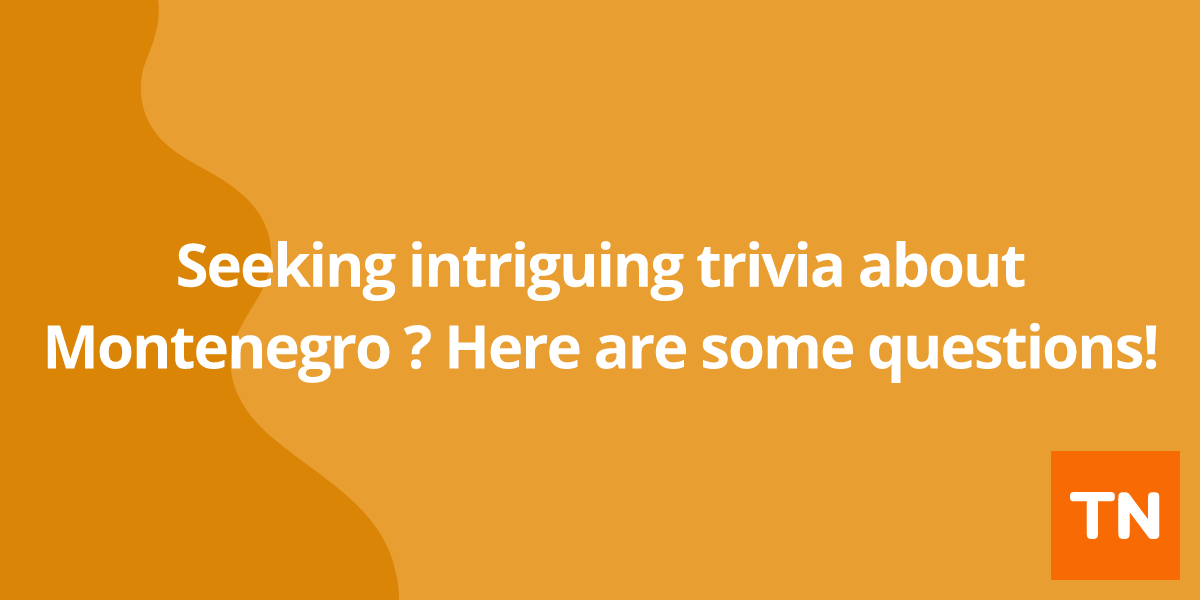Geography: What is the highest mountain peak in Montenegro?
Bobotov Kuk, reaching 2,522 meters (8,274 feet).
Geography: Where is Montenegro located?
Montenegro is located in Southeast Europe, along the Adriatic Sea. It is bordered by Croatia to the west, Bosnia and Herzegovina to the northwest, Serbia to the northeast, Kosovo to the east, and Albania to the southeast.
History: Which ancient empire significantly influenced Montenegro's architecture and culture?
The Byzantine Empire, evident in medieval churches and towns.
Nature: What is the name of the largest lake in Montenegro and a popular tourist destination?
Lake Skadar, shared with Albania, known for its rich birdlife and scenic beauty.
Culture: What traditional dance is typically performed at Montenegrin weddings and celebrations?
Oro, a circle dance characterized by intricate footwork and lively music.
Cuisine: What is the national dish of Montenegro and a hearty stew often served with potatoes and bread?
Njeguški pršut, a smoked ham made from locally raised black pigs.
Language: What is the official language of Montenegro?
Montenegrin, although Serbian is also spoken widely.
Religion: Which religion is the most widely practiced in Montenegro?
Orthodox Christianity, followed by Islam and Catholicism.
Currency: What is the official currency of Montenegro?
The euro (€).
Capital City: What is the historic capital city of Montenegro, known for its medieval fortress and winding streets?
Cetinje, although Podgorica is the administrative capital.
Coastline: How long is the coastline of Montenegro, boasting stunning beaches and Adriatic Sea views?
Approximately 300 kilometers (186 miles).
National Parks: How many national parks are there in Montenegro, protecting diverse ecosystems and landscapes?
Five national parks, including Durmitor and Biogradska Gora.
Bay of Kotor: What UNESCO World Heritage Site is recognized for its dramatic scenery, ancient towns, and winding fjord-like bay?
The Bay of Kotor, a natural wonder and popular tourist destination.
Literature: Which famous Montenegrin poet and Nobel Prize laureate is celebrated for his epic works?
Petar Petrović Njegoš, known for "The Mountain Wreath."
Music: What traditional string instrument is a central part of Montenegrin folk music and cultural identity?
The gusle, a one-stringed instrument played at celebrations and storytelling gatherings.
Flora and Fauna: What is the national flower of Montenegro, symbolizing beauty and resilience?
The wild pomegranate, found growing in rocky terrains and coastal areas.
Wildlife: What large mammal can be found roaming the mountains of Montenegro, known for its impressive horns?
The chamois, a goat-antelope species adapted to high altitudes.
Sports: What popular sport is enjoyed by many Montenegrans, particularly handball and water polo?
Team sports like handball and water polo are well-loved, with Montenegro achieving international success.
Festivals: What colorful carnival takes place in Kotor each February, with elaborate costumes and festivities?
The Kotor Carnival, a vibrant celebration with Venetian influences and masked parades.
Film: Which Hollywood blockbuster filmed significant scenes in Montenegro, showcasing its dramatic landscapes?
Casino Royale, featuring the stunning Bay of Kotor and medieval town of Perast.
Myths and Legends: What mythical creature is said to inhabit the mountains of Montenegro, known for its strength and agility?
The Zmej, a dragon-like creature in Montenegrin folklore, often associated with natural forces.
Traditions: What is a unique custom practiced in some parts of Montenegro, involving the throwing of bouquets on Christmas Eve?
Badnji Veče, where young men throw bouquets (badnjaci) into windows hoping to be welcomed by a girl.
Cuisine (Bonus): What type of cheese is produced in Montenegro, known for its sharp taste and smoky aroma?
Njeguški sir, a traditional sheep's milk cheese made in the Njeguši area.
Architecture (Bonus): What architectural style is characteristic of many old towns in Montenegro, featuring stone buildings and narrow streets?
Mediterranean and Venetian influences are evident in the architecture
